Genteel doyen Shyam Benegal and Bollywood's enfant terrible Anurag Kashyap on how India's movie capital shaped them, and they shaped it too
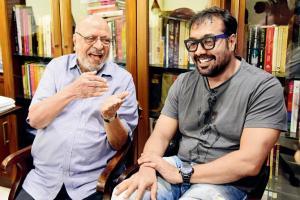
Shyam Benegal and Anurag Kashyap. Pics/ Shadab Khan
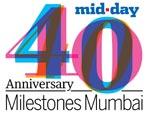 It's pre-noon. We are at Shyam Benegal's office in South Mumbai. Anurag Kashyap has travelled all the way from Oshiwara in North Mumbai, where Bollywood currently resides. Between two of India's most iconoclast filmmakers rest stories that equally span the journey of Mumbai as a movie capital, since they also personify the change that they wished to see.
It's pre-noon. We are at Shyam Benegal's office in South Mumbai. Anurag Kashyap has travelled all the way from Oshiwara in North Mumbai, where Bollywood currently resides. Between two of India's most iconoclast filmmakers rest stories that equally span the journey of Mumbai as a movie capital, since they also personify the change that they wished to see.
What we didn't know is Kashyap's own struggles in this city, when he moved from Delhi in 1993, began from the same Everest building, Tardeo office we are at. It was the first door he'd knocked, looking for a job. This is his first visit since. Understandably, we start the conversation with:
ADVERTISEMENT

mid-day: What happened when you first came to Mr Benegal's office [in 1993]?
Anurag: It was my second day in Bombay, rainy June 4. I found his address, and came right here. Shyamji wasn't in. I met a sweet man, Mr Ravi Khemu [actor Kunal Kemmu's father; Benegal's associate]. He realised I'd only watched movies at film festivals, and recommended that I go to FTII. The exams of which were over. Then he gave me other addresses — of Govindji [Nihalani], and Prahlad Kakkar, who was also in the same building. Eventually, I realised, I needed to do something [for a résumé], before looking for a job.
mid-day: Mr Benegal, you've been in this office for years. Even up until the '90s, South Bombay was actually the hub of the city's film industry, wasn't it?
Benegal: I've been here since the '70s. Before this, I used to be at Jyoti Studios [in Nana Chowk]. It was the first sound studio in the country — Alam Ara [1931]was shot there. I used to love that place. Just about anybody/everybody in the history of Indian/Hindi cinema had worked at Jyoti Studios.
For years, before things became expensive in this part of the world, and offices moved to Dadar and thereafter, Andheri, this street in Tardeo was the capital of the entire film industry.
Anurag: When I came to Bombay, Lokhandwala was a small hub, with Four Bungalows, and a road between them. Nothing else. Zee and STAR had started setting up offices, and we used to come to Worli all the time. The student-lot, like Imtiaz Ali, stayed at Lalbaug.
Benegal: The film industry had been gradually moving northwards given land value. BR Chopra used to be in Parel, and then his brother [Yash Chopra] moved further up [to Juhu]. Now, many have moved beyond Andheri because it's not affordable.
mid-day: Has the demographic of people looking for jobs in films in Bombay changed over the decades?
Benegal: Not at all. Most of them come from smaller towns with stars in their eyes, given the larger-than-life image of cinema itself.
Anurag: Most of them come here to be actors. But now with so many job opportunities in various media, what's come down is passion for making a movie — and living and dying for it.
mid-day: When you hang in Versova/Andheri, the sense you get is that actually everyone is from Delhi. Did that begin in the '90s?
Anurag: A lot of people moved from Delhi, after Shah Rukh Khan. Delhi had a strong theatre scene, where Shah Rukh used to do smaller roles. But when he broke out [in the mainstream] in such a big way, everybody came to Bombay thinking, if Shah Rukh can, so can we. The exodus that was otherwise taking place anyway didn't comprise people who wanted to be part of mainstream. We liked a certain kind of cinema and theatre, and wished to be part of it. The entire cast of Bandit Queen moved to Bombay from Delhi after the film. Piyush Mishra even wrote a play about it called Jinhe Jaldi Thi Woh Chale Gaye!
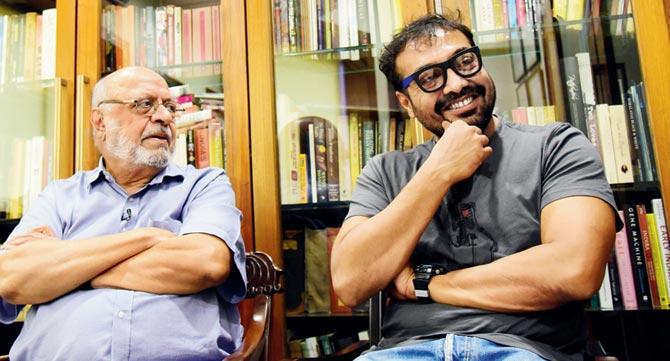
mid-day: By the '80s, Mr Benegal, while you were an established filmmaker, your cinema must've been still hard for the city's showbiz to define within its constructs. True?
Anurag: They used to call it "parallel" cinema [laughs].
Benegal: I hated those terms! Somebody once called me a middle-of-the-road filmmaker. I said if I stand in the middle of the road, I'd get run over! Calling something alternate/parallel denoted a caste system. The terminology automatically indicated that nobody can see your films. Even with press reviews, while they wrote good things, there would always be a line, "This is not for general public!" That's it. Killed your film! [laughs].
Anurag: And we were categorised the "Shyam Benegal" type! Which means I need another job to sustain myself.
mid-day: Say a Karan Johar collaborates with Anurag. Curious to know how mainstream showbiz comprising Manmohan Desais of the world with Amitabh Bachchan at the centre interacted with you personally, Mr Benegal.
Benegal: I had a similar kind of [joint] conversation [for the press] as we're doing now, with Manmohan Desai, and it went off quite well actually! And there was no feeling [of discord with people from "commercial cinema"] of any kind, seriously. Because you were not seen as a threat. They could be very patronising.
Anurag: There must also have been resentment that if people like Shyamji didn't exist, then all other awards could've also been ours — outside of box-office! [laughs].
mid-day: Anurag, you on the other hand, were the wild-child seeking validation from the [mainstream] film industry. Threat in that sense?
Anurag: I made myself into one! My career started precisely because I wasn't a threat — available to do any job for free, because I was learning, and figuring out if I can do it, or not. That's how I broke in. In the early 2000s, I started fighting aggressively for sustenance of a certain kind of cinema. Because I realised the '70s/'80s were not going to come back. Back then, to watch a film that I wanted to, I'd have to travel all the way to Town, that too to one cinema, which was playing one show, over 20 weeks! And even that began to be taken away from us. It was a massive fight.
Benegal: Multiplexes [that came in after] made a huge difference. It gave an incredible boost to filmmakers who were not part of the mainstream, as it were. Because, you had to fill a theatre of 60 or 100 seats, which was not so difficult.
Anurag: Single screens were very different for us. How do you fill up that many seats? And they wouldn't give us more than a morning or a late-night slot.
Benegal: And if you couldn't get 80 per cent audience on the first weekend, you were out on Monday. Even if you filled up 75 per cent of a 1,000-seat cinema, you'd still be out.
mid-day: When television entered the scene in the '80s, did that change things for you as a filmmaker, Mr Benegal?
Benegal: Of course. For one, people who had never seen my films started watching them, because they were coming to your home. That's really where I developed an audience.
Anurag: That's when our fathers said, his film is coming, watch it on TV. Our introduction to his works was the TV series, Bharat Ek Khoj.
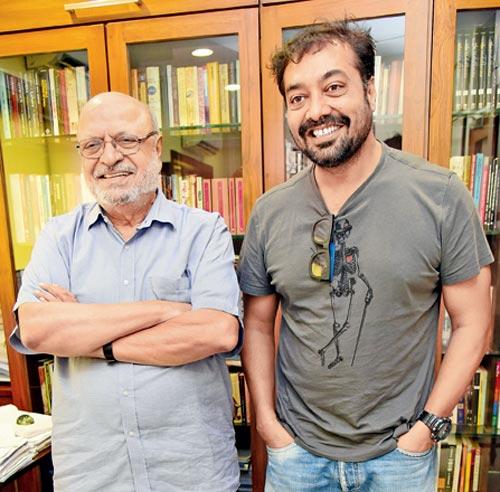
mid-day: While we categorise films as mainstream/parallel, the fact is both of you have been commercial filmmakers, backed by private funding with expectation of returns, isn't it?
Benegal: Except for Suraj Ka Satvan Ghoda [1992] and Mammo [1994], which were NFDC [state-funded] films, all my features were made through regular, private finance. Naturally, they had to cover their cost. There's no way I could've remained a filmmaker, if they didn't. Any filmmaker would feel commercial pressure. But you really have to work on strategies, and be clever to get your way.
Anurag: You have to say things that people believe in, to protect your vision.
mid-day: Both of you worked with new actors, who could build a fresh audience-base. Say Nawaz, Vicky, etc. in one case; and Naseer, Shabana, Smita and others in the other. This created a parallel star-system of its own, didn't it?
Benegal: It did, to the extent that some of them [actors] started to resent it! [laughs]. They weren't getting an 'in' into the mainstream. Because they were considered to be a certain 'type' of actors. Well, you can't beat the system in matters like these. I wanted to make films that I wanted to make, and in my own way. I don't think there was any intention beyond that.
Anurag: All my actors at least get strong-character, or even lead, roles in the mainstream. That transition has happened. Because the old star-system doesn't work anymore. There's greater democracy over how the medium has changed, especially with the advent of the Internet. A person who pulls in the biggest crowds these days is Bhuvan Bam, who's a YouTube sensation.
mid-day: The way Mr Benegal did with actors fresh from FTII in the '70s, you also created a similar ecosystem, decades later, in Mumbai, though.
Anurag: I didn't do it thinking I was creating a new ecosystem. I didn't have money, so I developed a new way of making movies. It started with Black Friday [2007] — shooting on the street, in full public view. I had no option but to hide cameras, and shoot everywhere. I had no money to create Zaveri Bazaar, so I'd shoot there.
mid-day: Black Friday was produced by mid-day.
Anurag: Which helped, because mid-day gave us these badges, that we flaunted around saying we're shooting a documentary. In the process, I learnt how to shoot on streets without people ever finding out. Primary requirement of that language is to work with people who won't be recognised. I went looking for good actors, with screen presence, and who aren't known. So I created casting systems, with [people like] Gautam [Kishanchandani], Mukesh Chhabra..
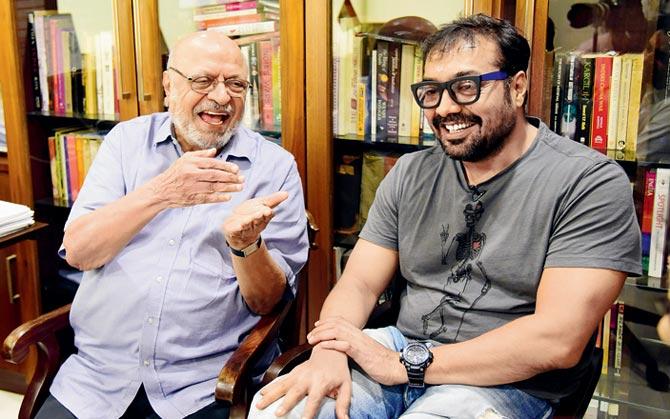
mid-day: For the longest, since local distribution was a bottleneck, did you both consciously look at international markets to expand audience-base?
Benegal: I never did. But because my first film Ankur [1974] went to a few international film festivals, garnering excellent audiences, I found a distributor with presence in all of western Europe. And another distributor in Britain, with a string of art-house cinemas in London. Automatically, my films after that got distribution.
Anurag: I was only trying to survive, having grown tired of people telling me that nobody would want to see my films. I spent considerable time trying to understand that market. I had to make a film that I owned — That Girl In Yellow Boots — so I could experiment in that direction.
Benegal: Now you have OTT platforms. You find your films in their bank. They're available to people all over the world.
mid-day: Given where we are now, with the Internet, where practically everyone is a filmmaker, do we even see Mumbai as a centre of filmmaking in the future?
Anurag: The world's completely changed. I just saw a whole shoot, where the producer is Bengali, the film is in Hindi, the filmmaker is from the South, the cinematographer is from Poland, sound-designer is from elsewhere. Everybody had only met on the Internet. And they're now making a film together.
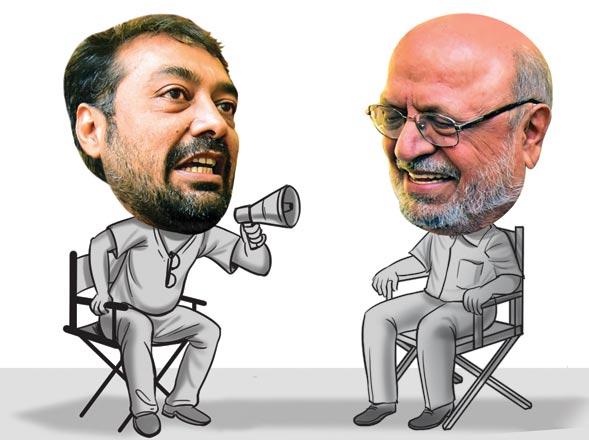
Illustration/ Ravi Jadhav
mid-day: Looking back at 40 years of films, if you were to place a turning point, where would that be?
Benegal: It was television, which went national. That made the huge difference.
Anurag: I think it was television, when it came in the '80s. And then Internet, which went global. If there was no TV, people wouldn't have seen Shyamji's films. Likewise, if there weren't pirated downloads on the Internet, they wouldn't have seen my films either.
mid-day: Disappointed that two filmmakers are calling TV and Internet as turning points. There's still cinema, right; or is that charm over?
Anurag: It's my personal choice to watch films in cinemas. But I can't deny that I found my audience online.
Benegal: The classic distance that you must keep from any screen is two and half times its diagonal length. That gives you the kind of image that you'd get in a cinema hall. I can get that in my home — on a large screen, with surround sound, the works. What I miss is the audience!
Catch up on all the latest Mumbai news, crime news, current affairs, and also a complete guide on Mumbai from food to things to do and events across the city here. Also download the new mid-day Android and iOS apps to get latest updates
 Subscribe today by clicking the link and stay updated with the latest news!" Click here!
Subscribe today by clicking the link and stay updated with the latest news!" Click here!







